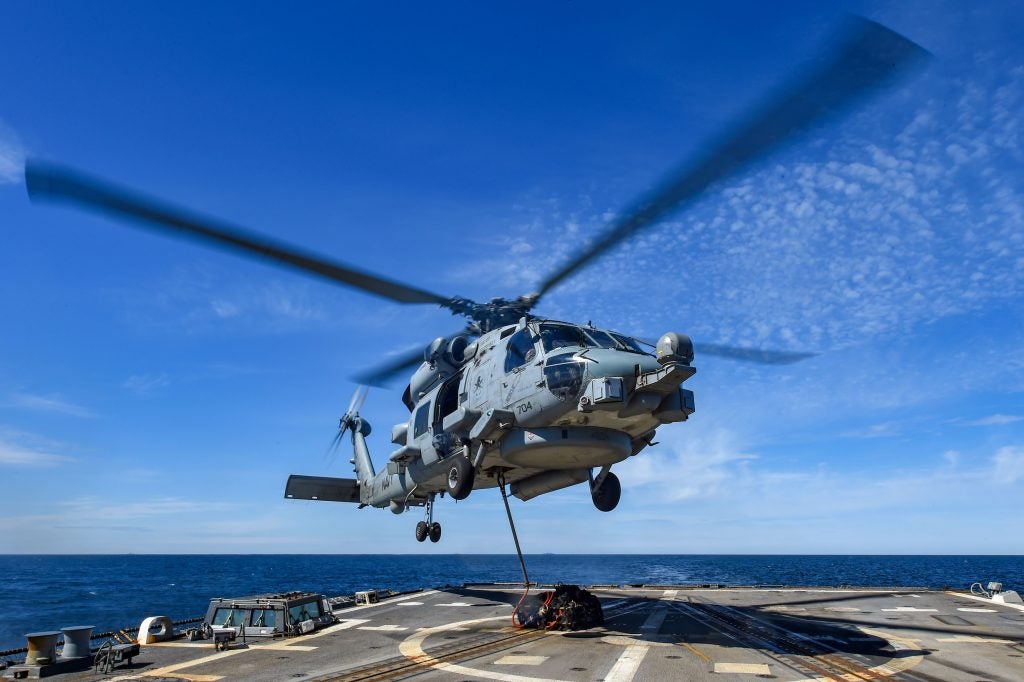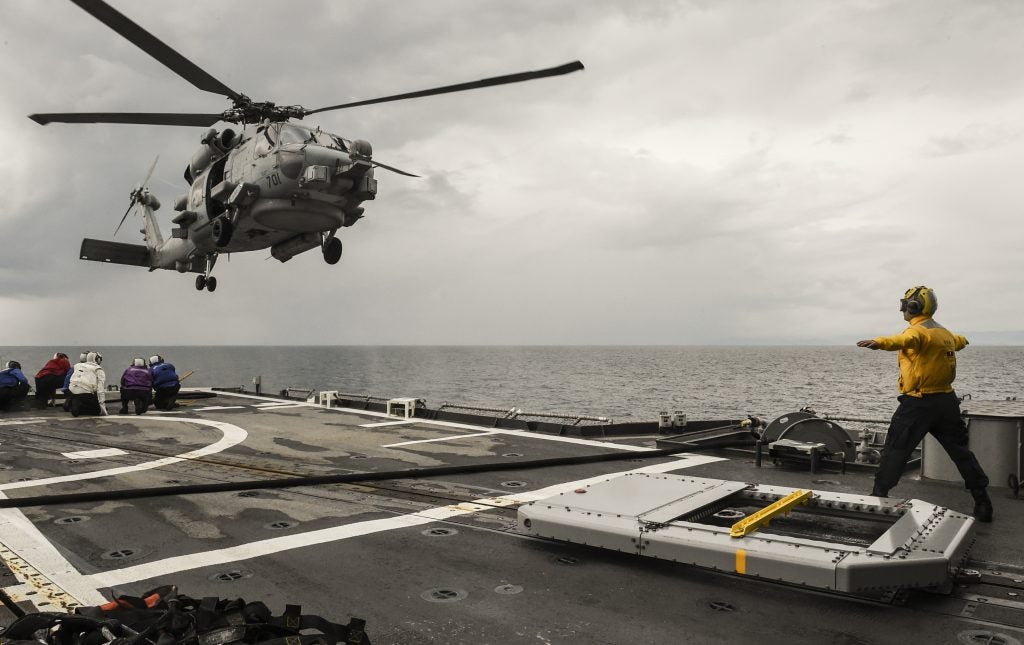State Department Clears $800 Million Foreign Military Sale to South Korea for MH-60R Helicopters
The US State Department has cleared the sale of twelve MH-60R Seahawk helicopters and related equipment to South Korea. This is the first step in the process to actually selling the helicopters to South Korea, but does not necessarily mean that the sale will be completed.
More than just the helicopters has been cleared by the State Department. Also included in South Korea’s request are four M-240D medium machine guns, four GAU-21 heavy machine guns, 1,000 sonobouys of varying types, as well as a wide array of radio equipment. Additional requested systems must be accepted by Congress, and are made up of thirteen surface search radars, twenty-five engines, twelve dipping sonars, and thirteen EO/IR targeting systems. Also included is long-term support for the purchased systems and airframes.

Totaling around $800 million, the sale comes at a critical time. On the one hand, the sale of highly capable sub-hunting helicopters that can fly off the deck of South Korea’s flat tops and surface combatants may alter China’s ability to operate its submarines in the region now and tomorrow. The Defense Security Cooperation Agency said in a statement: “This proposed sale will support the foreign policy and national security objectives of the US by meeting the legitimate security and defence needs of one of the closest allies in the INDOPACOM Theater.”
However, the sale also comes at a time of great friction between the Republic of Korea and Japan. Tensions have always simmered between the two countries over Japan’s treatment of the Korean people during the period when Japan colonized the peninsula. This occupation only ended with WWII, and Japan has never apologized for the atrocities its military and colonists had committed. These tensions came to a head on August 2nd, when Japan stated that it would slow exports of materials to South Korea.
While both nations operate variants of the Blackhawk helicopter in a naval role, the sale of a large quantity of aircraft, sensors, and other systems at such a time could be taken as the US indicating preference for one country over the other in the long standing dispute. It will be important for the military and political alliances the US has built in the western Pacific region that the sale of military equipment is not seen as a political statement at this juncture.

